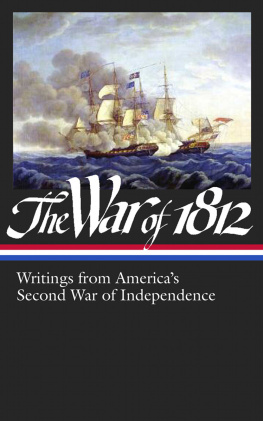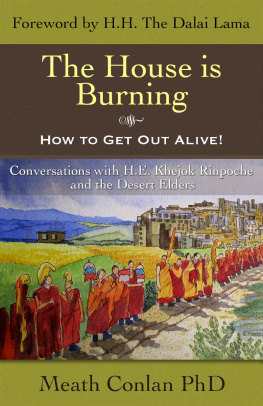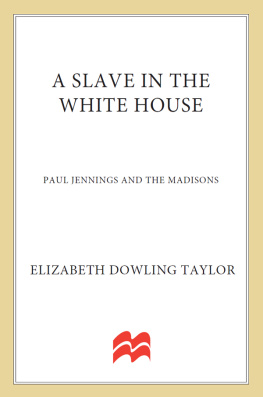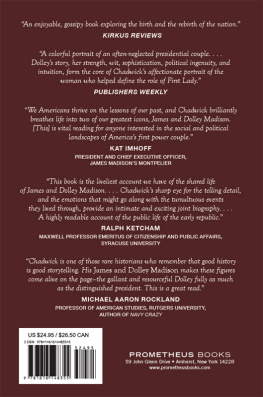The Painters Chair
Houses of the Founding Fathers
Dr. Kimball and Mr. Jefferson
Thomas Jefferson, Architect
House-Dreams
The Preservationists Progress
Indians was the term used to identify indigenous American peoples during the Federal era; todays preferred Native Americans did not come into common usage until the 1960s.
The College of New Jersey would become Princeton University in 1896.
A familiar title in Federal America, Chief Magistrate was a term employed by, among others, George Washington; he used it to refer to the office of the President in his second inaugural address.
Today, the Eastern Branch is known as the Anacostia River.
Wise words, but note that the source was James Wilkinson, himself an incompetent military man and a onetime conspirator with Aaron Burr; after his death he was also found to have been a spy in the pay of the Spanish crown.
There are significant disagreements among historians about the size of both the Royal and U.S. navies in 1812. While scholarly estimates range from 15 to 23 for the Americans and 500 to 750 or more for the British, there is unanimous agreement that the American navy was vastly overmatched.
Both cannon (more precisely, long guns) and carronades were mounted weapons intended to fire heavy projectiles. Both consisted of cast-iron tubes mounted on wooden carriages. Distinguished by their longer barrels, long guns differed also in that they were mounted on four-wheeled carriages; when fired, the carriages absorbed the recoil. Carronades had stubby barrels mounted on slides in carriages that were typically bolted to the deck of the ship.
Each design had its advantages. A new 32-pounder carronade (they had first been produced in Carron, Scotland, in the late eighteenth century) weighed in at roughly the same tonnage as a 12-pound long gun; since a ships deck could bear only so much weight, a greater weight of metal could be fired at an enemy ship by carronades. Furthermore, they required less than half the powder to fire and half the crew to man, and took up less space on a ships deck. A carronade could fire a cannonball only about a third of the distance a long gun could, and, because they were fired at lesser muzzle velocity, carronade projectiles consequently had less penetrating power. On the other hand, they were thought to produce more deadly splintering. According to tradition, carronades were not counted when rating a ship.
On July 16, 1813, during Madisons prolonged recovery from a life-threatening fever, the editor of the Maryland Gazette observed that it was unfortunate that the head of the government was not a man like Rufus King, senator of New York and a staunch opponent of the war. According to the Gazette, King would be less likely to pursue the phantoms of a distempered imagination.
Among medical historians, the consensus is that the term malicious fever in the Federal era was used to identify the acute infectious disease we know as yellow fever. In contrast, bilious fever was a less specific diagnosis, one that was applied to a range of medical conditions, varying from malaria to nonspecific ailments with symptoms of fever and vomiting of bile.
The reference was to Madison, Monroe, and the Swiss-born Gallatin, though the latter had been a naturalized American citizen for almost three decades.
It is saidand oft disputedthat because the trees at York seemed to be standing in the water, Native Americans named the place Tarontah (trees on the water); thus the French Fort Tarento and, later, the anglicized name Toronto.
Naval historians have long debated whether these well-remembered words were uttered by Lawrence or are merely patriotic apocrypha. However, the preponderance of contemporary reports, some of them from British officers reporting what they heard immediately after the sea battle, suggests that the words were among the orders Lawrence uttered as he lay belowdecks.
When ingested, the salicin in white willow bark is metabolized as salicylic acid, a compound similar to aspirin.
Dickinson College in Carlisle, Pennsylvania, chartered in 1783, which Rush graciously named after the states Governor, John Dickinson.
The Department of Justice was formally established in 1870 by an act of Congress; in earlier years, the Attorney General was a one-man department representing the interests of both the Chief Magistrate and the Congress.
Internal evidence suggests that this undated letter was written in two sittings, most likely Monday evening, August 22, and Tuesday morning, August 23. However, documents from the time that appear in American State Papers contradict one another as to its chronology.
Many of the details concerning Mrs. Madisons last days at the Presidents house are drawn from her letter to her sister of Tuesday and Wednesday, August 2324, 1814. The original of this famous letter has been lost, but a version survives in Dolleys own hand that is thought to date from ca. 1834. Scholars have suggested that, in retrospect, she may have taken certain dramatic liberties in recounting events, but the document offers unique insight into the hours preceding the sack of Washington. For a cogent analysis, see David B. Mattern, The Famous Letter: Dolley Madison Has the Last Word, White House History (1998), 22833.
Armstrongs inattention has been much discussed by historians, but surviving words of both Madison and Treasury Secretary Campbell describe a conversation the latter had with Armstrong in which the Secretary of War acknowledged he would be taking no part on so critical an occasion. Madison bearded Armstrong twice that morning, once at the Navy Yard and later at Bladensburg; the upshot, in Armstrongs own words, was that he became a mere spectator of the combat.
Though the name of the fortification established in 1807 was Fort Washington, it was popularly known as Fort Warburton after the manor house that had long stood on the property.
Precisely how the Madison occupancy of the house known today as the Octagon came to pass is not entirely clear. A Tayloe son asserted in 1872 that the idea had been his fathers; other claimants for the plan included Srurier and Thornton. Given Thorntons character and his peripatetic nature, among other factors, it seems almost certain that he played some role.
Thomas Jefferson to James Madison, September 24, 1814. Jeffersons gesture was both generous and civic-minded; he believed strongly in the importance of books and education to his country. As a man deeply in debt, he also badly needed ready cash and eventually he would be paid $23,950 for his 6,487 volumes.
The school of which Gallatin was founding president was renamed New York University in 1896.
New Yorker James Kirke Paulding was a writer, a sometime collaborator with his brother-in-law Washington Irving, and a government bureaucrat (Madison had appointed him in 1815 to the newly created post of secretary to the Board of Navy Commissioners). For an epigraph in his first novel, he would compose the immortal lines Peter Piper picked a peck of pickled peppers, / Where is the peck of pickled peppers Peter Piper picked?
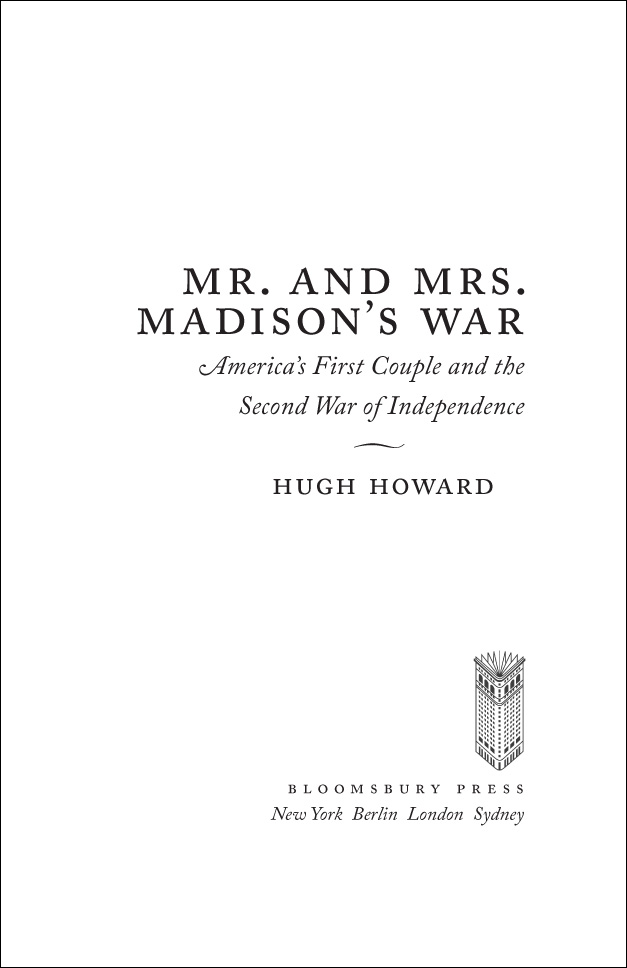
Maps drawn by Moacir de S Pereira based on public domain originals
Copyright 2012 by Hugh Howard
First U.S. Edition 2012
Electronic edition published in January 2012
All rights reserved. No part of this book may be reproduced or transmitted in any form or by any means, electronic or mechanical, including photocopying, recording, or by any information storage and retrieval system, without permission in writing from the publisher.
For information address Bloomsbury Press, 175 Fifth Avenue, New York, NY 10010.
Next page



